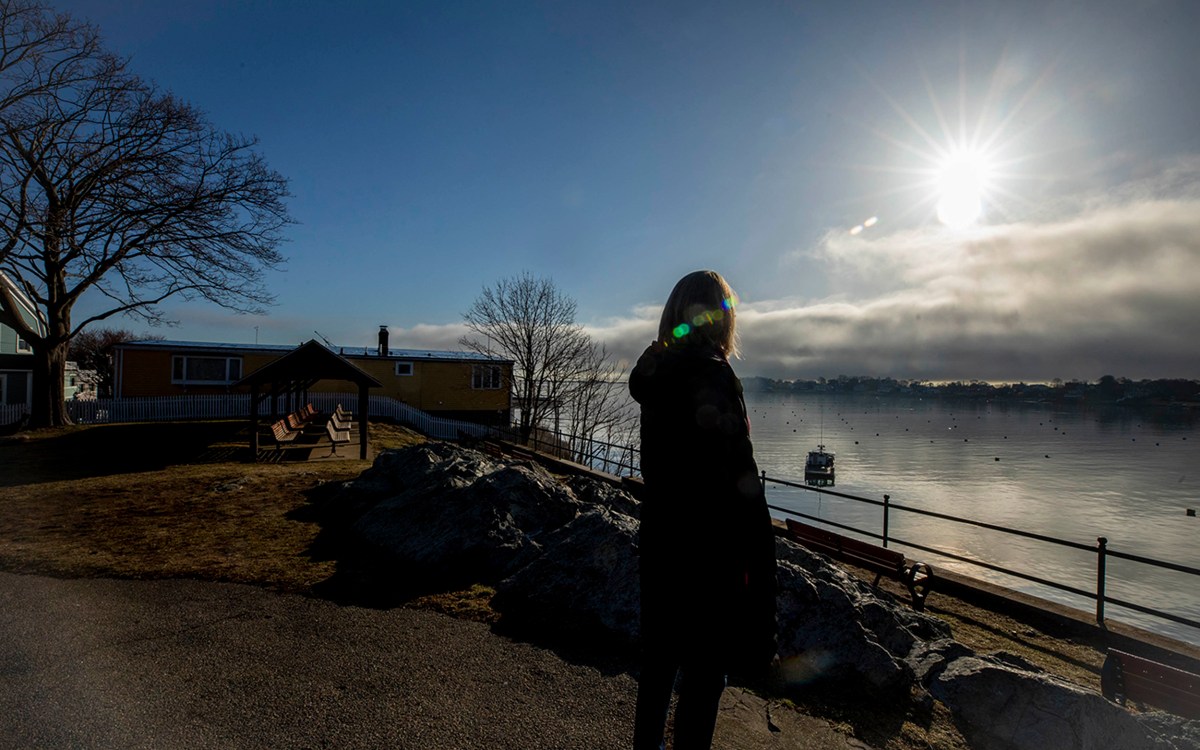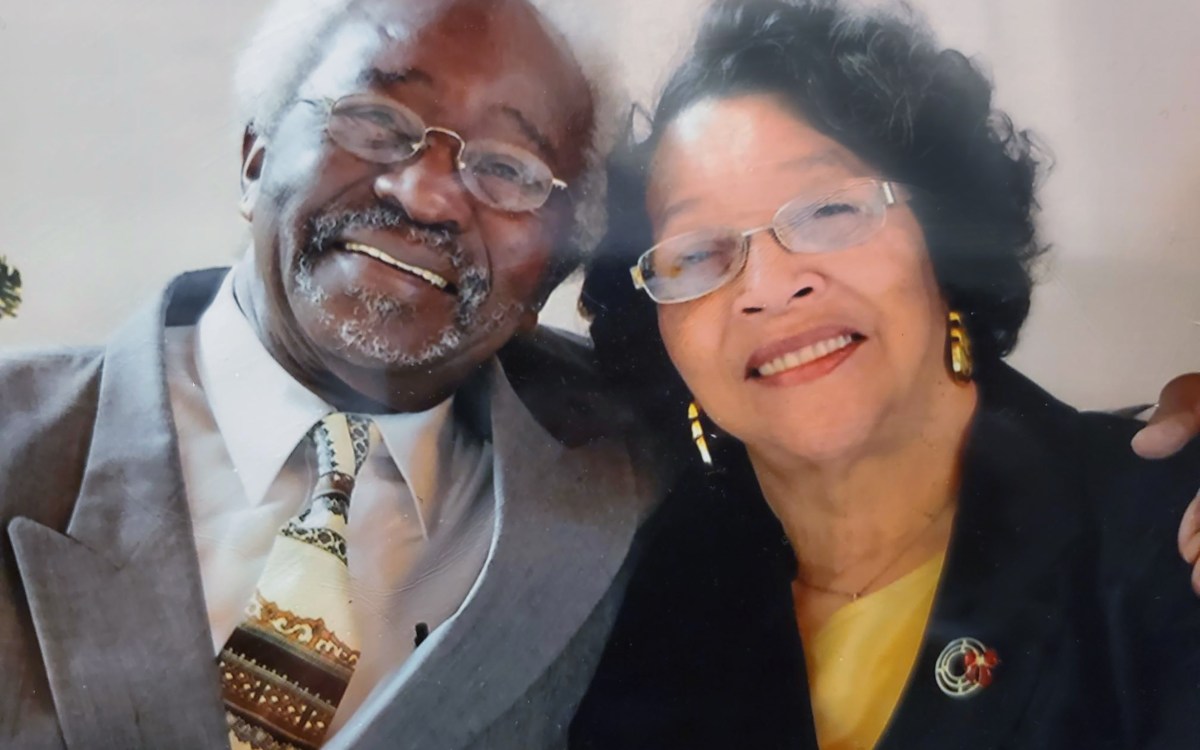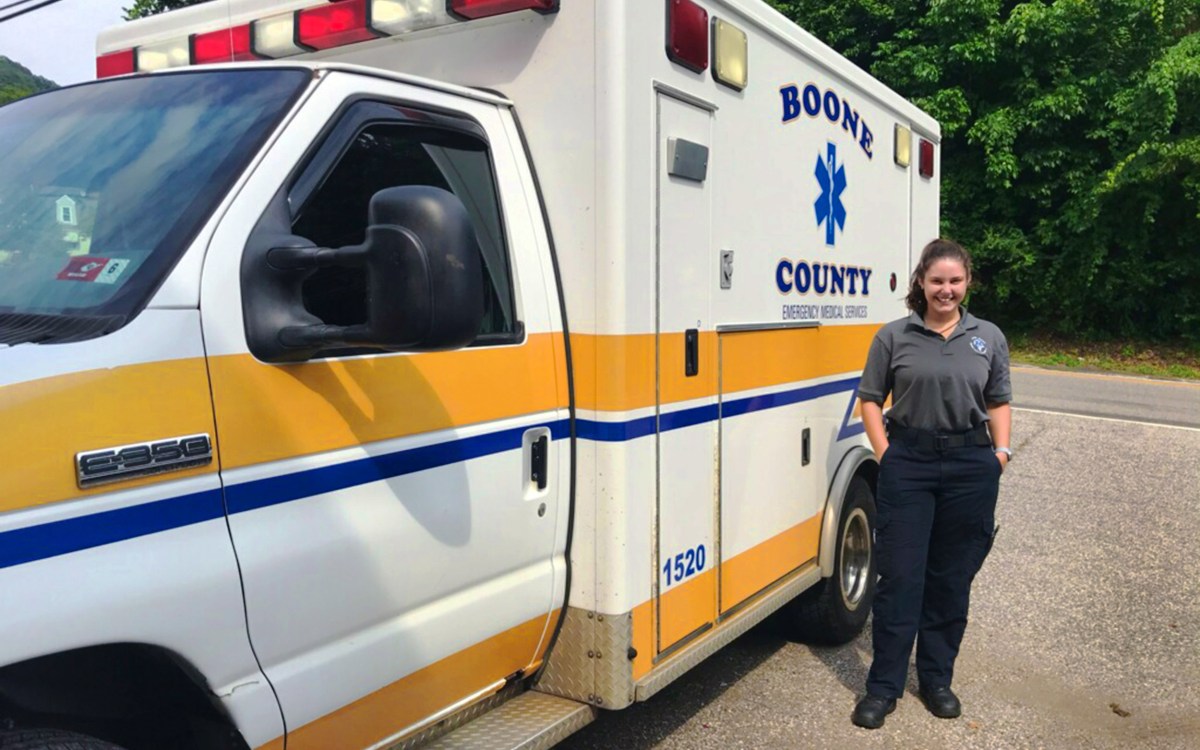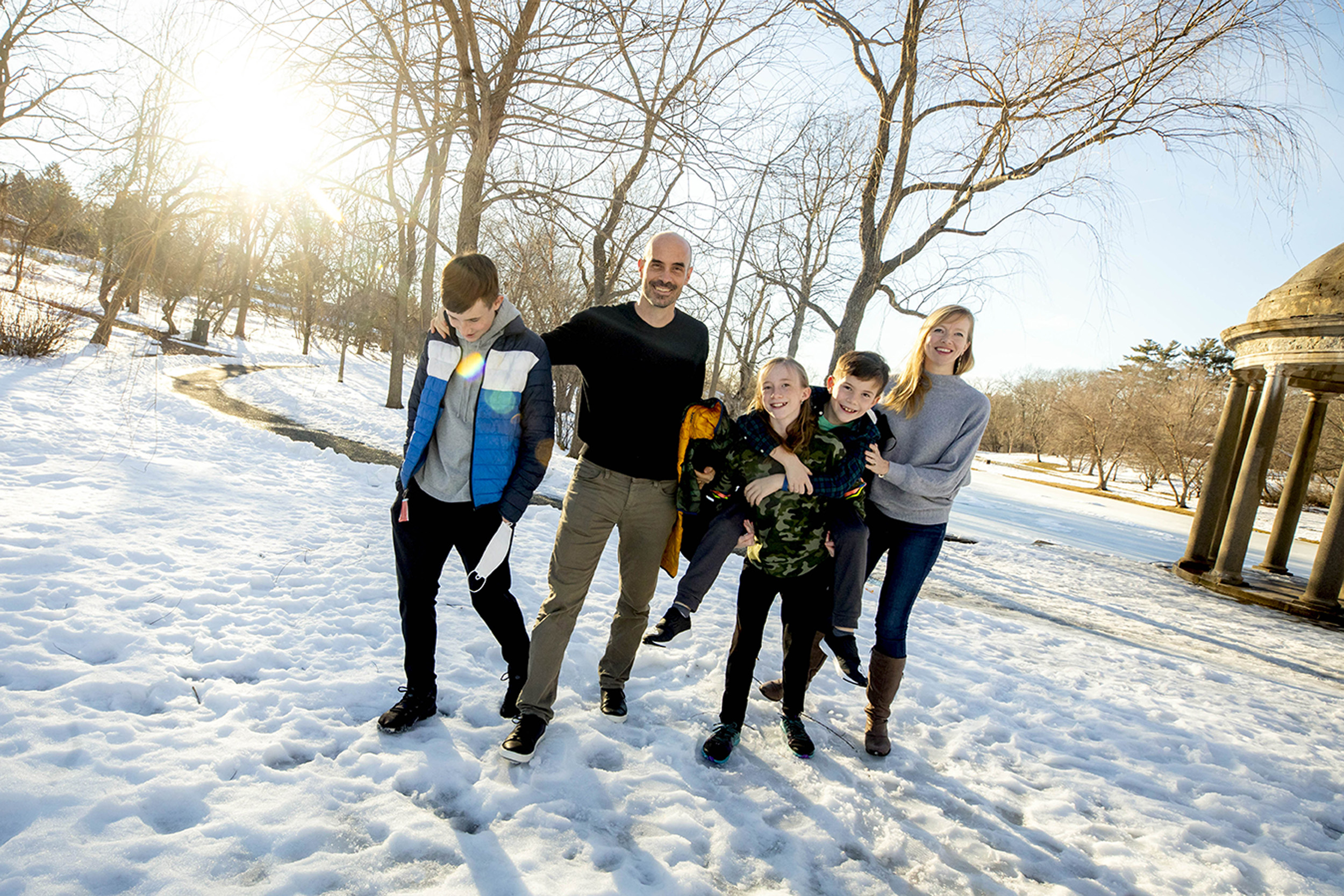
Joseph G. Allen and his wife, Mary, (far right) and children Colby (from left), Chelsea, and Landon at Larz Anderson Park.
Photos by Rose Lincoln/Harvard Staff Photographer
A year of ‘never off’
Healthy Buildings was a nascent field, Joseph G. Allen says, until COVID
In My View
Joseph G. Allen
Last January, we saw the early signs out of China and turned our Healthy Buildings program around and started working with different organizations to help them prepare to adapt to COVID-19, knowing full well this pandemic had the potential to do exactly what it’s done over the past year.
Every day since then has felt urgent — never enough time in the day for everything I want or need to do to help others through this. We’ve been trying to translate the evolving science around COVID-19 into trusted guidance on how to keep people safe indoors, be it at schools, offices or community child-care centers, homeless shelters, performing arts theaters and even jury trials, and right here on our own campus, too. We’ve tried to hit on every possible channel, too, to reach as many as possible — op-eds, radio, and TV for the general public, HBR for business leaders, peer-reviewed papers and editorials for our scientist colleagues, white papers, websites, web-tools, videos, one-on-ones with governors and members of Congress, and social media — you name it; we tried it. I’m incredibly proud of the people I work with every day — such bright, selfless, creative, and passionate students and researchers — they epitomize public health.
“My philosophy is to follow the precautionary principle and my final gut check is always: Would I give a different answer if my son or daughter was in this school, or my wife or mom or sibling worked in that building?”
For me, personally, so much has been unfamiliar about this pandemic, as is the case for everyone. But there is an element that’s also quite familiar, unfortunately, and I think it’s because of my work conducting “sick building” investigations. We know how to assess hazards in buildings, and most importantly, we know how to put in controls to keep people safe. From any hazard. This one included. My approach is always to use the best available data to make the best decision possible in real time. There is a cost for inaction, as we have seen. My philosophy is to follow the precautionary principle and my final gut check is always: Would I give a different answer if my son or daughter was in this school, or my wife or mom or sibling worked in that building?
My hope is that we move from fixing problems in buildings after they happen to a more proactive approach. That’s been the goal of the Healthy Buildings program. Before COVID, healthy buildings was a nascent field. Now, it has exploded and everyone is rightly talking about indoor environments. I feel a deep responsibility to help shape what comes next, now that everyone is paying attention. The healthy buildings movement will be a failure if it’s confined to those with resources. This must be a movement that serves all.
As for home life, at the start of the pandemic, I was teaching class and doing interviews from my car as we adjusted to working and learning from home. These are minor inconveniences. The hardest thing is that with three young kids, I see what’s happening to them by not being in school. We’re a family that has every advantage and every privilege we could need. We have our jobs; we have internet; we have computers; we have our health. My kids are in eighth, sixth, and third grades and have mostly been in a hybrid school model. And still, learning is not the same.
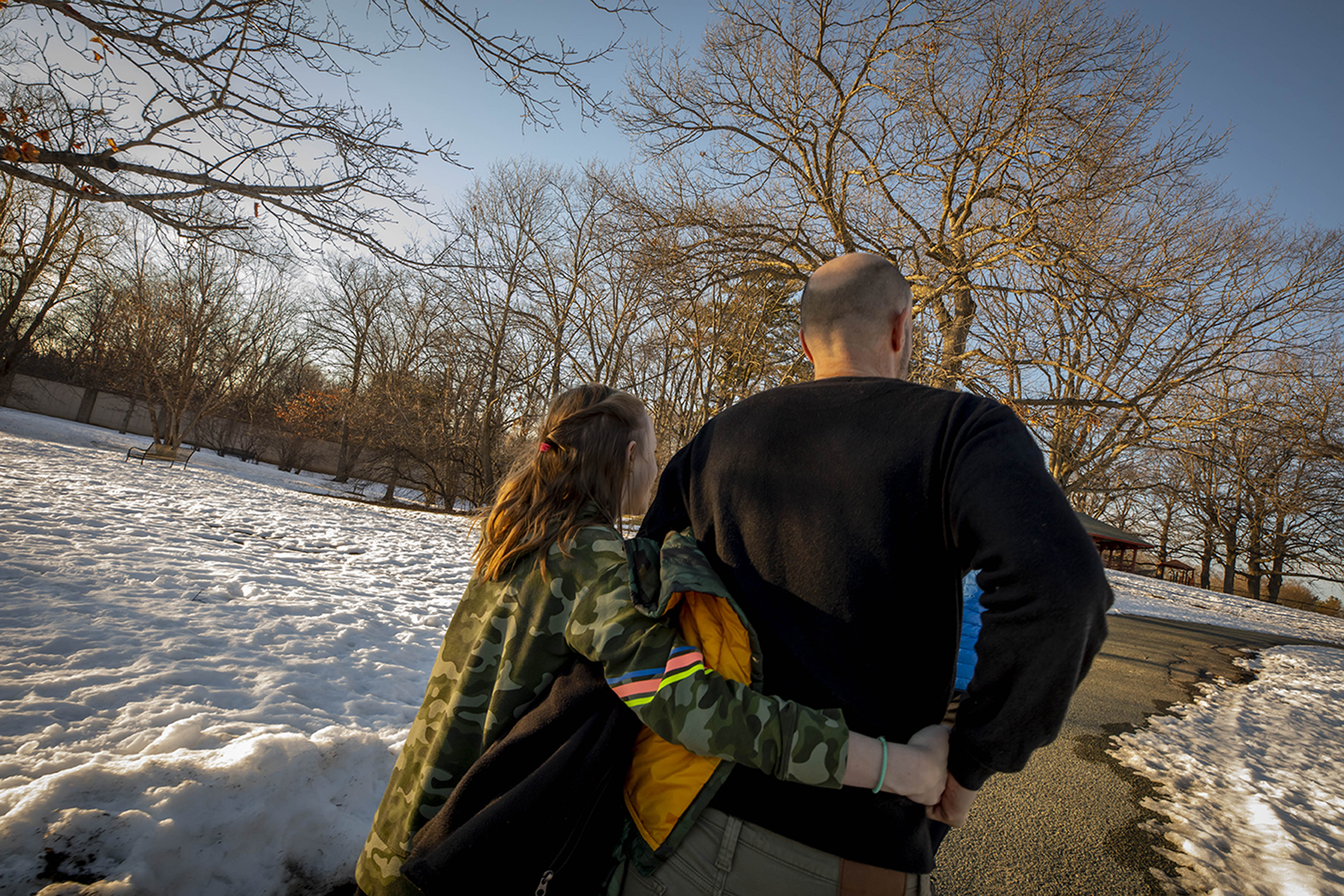
I want to be clear that what my family is going through are minor hardships compared to what many around the world and in this country are facing every day. I can’t imagine what it’s like for families who have caregivers working in health care or other essential jobs and can’t be home, or kids who are not in school and don’t have access to internet or a working computer or access to food and care, or the millions who have lost a family member to COVID-19.
I try to detach from what’s happening for me personally so I don’t lose sight of what’s happening more broadly in the world. This is, of course, bigger than my family and my kids’ schools. I try to be careful that I have a wider lens of what’s happening out there, so my work isn’t colored too much by my own situation.
I think what a lot of scientists are probably experiencing — myself included — is there really is no turning off or tuning out. The work has been seven days a week for over a year, and I haven’t had any time to reflect on the experience so far. My days start at 4 a.m., sometimes earlier, and stretch into the evening, ending with a review of the science and whatever changed that day. I don’t think I’m doing anything extraordinary or different than what our colleagues, students, faculty, administrators, and staff at Harvard are doing. I see everybody pulling hard here to make this work.
The never off isn’t great, but at the same time, everything I know and love is at stake. So there’s no shortage of motivation around for me to try to change things for the better, and I’m OK with not having an off-switch. There will be time off when we’re through this. We’re moving into the next phase of this crisis, but it’s certainly not the time to slow down.
— As told to Manisha Aggarwal-Schifellite
Joseph G. Allen is an associate professor of exposure assessment science and director of the Harvard Healthy Buildings Program at Harvard T.H. Chan School of Public Health. Allen is also co-author of “Healthy Buildings: How Indoor Spaces Drive Performance and Productivity,” with John Macomber of Harvard Business School.
More like this



